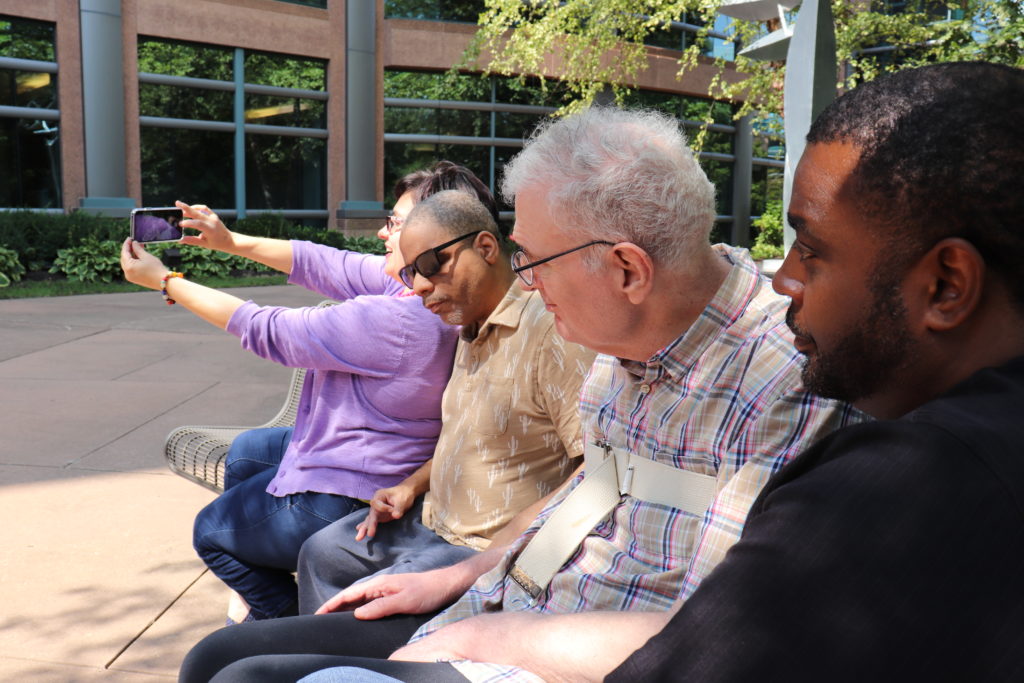GoodLife values individuality. That’s why our residential services offer a variety of living arrangements developed around a person’s level of need to create safe, comfortable, and long-term home environments. Whitney Lamb, director of GoodLife’s Professional Family Teaching Model shares more about why our shared living model is one of our most successful—and meaningful—programs. It is a service model that naturally fosters true community integration, consistent individualized supports, and opportunities for learning new skills.
Whitney, what is the Professional Family Teaching Model?
Call me biased, but I believe our PFTM is truly something special. It is a shared-living program where an individual, couple, or family provides services in their home to an adult with intellectual or developmental disabilities (I/DD). Simply put, it’s adult foster care. Residents live as a member of the provider’s family to maximize independence and quality of life.
That does sound special. Who can be a provider?
Anyone with a heart for supporting those with special needs! The Professional Family Teachers (PFT) are the most important piece of this program, as they play a significant role in the consistent care of our residents by providing a safe and loving home in which residents can learn new life skills and naturally integrate in a supportive community. We see a lot of Direct Support Professionals (DSP) transition into the PFT role after they have created a bond with a resident. However, we encourage anyone who is interested in opening their home to get in touch with us and see if our program is a good fit.
What are the steps or requirements to becoming a PFTM provider?
Step one, individuals should let me know they’re interested in serving our community in this way. We’ll talk about basic home considerations (like extra bedrooms or ADA-accessible entrances) and gauge if their current lifestyle fits the two-year commitment for sharing their home. From there, requirements include passing a placement study, a home check, meeting minimum training standards, willingness to become certified, and successfully passing background checks and screenings.
Why is this program so successful?
From the perspective of the family teacher, it allows independence and control over the workday. PFTs are paid as independent contractors, which means they don’t report to a supervisor or manager. PFTs are completely responsible for the management and coordination of services within their home. That can look like staying at home and learning to cook one day and spending time in the community at the movies the next day. PFTs are still well-supported—they have access to GoodLife’s behavioral consulting services, health and wellness clinics, respite care, and other community resources.
From GoodLife’s perspective, the PFTM shared living program offers an incredibly stable and high-quality life for those served. Nationally, we know that turnover rates are surging for DSPs, but across the last 20 years, the annual turnover in this program averages just 1-3%. As important, in shift-based care, it may take as many as 700 DSPs to care for 100 clients. In the PFTM, it takes just 70 professionals to care for those same 100 clients. As we face the workforce crisis, it’s critical that we utilize this stability and capacity to accomplish GoodLife’s mission.
And how successful is it for residents?
On average, individuals live with a matched PFT provider for 7 years, with our longest-standing home serving for 16 years. That’s incredible! It shows us that the model works and that residents are living safe, successful, and enriching lives within our PFTM homes. We attribute this success to consistency and thoughtful placement. We know our residents well, and we do everything we can to place them in a home and with a family that will cultivate their shared interests and exceed at meeting their needs. When an individual with I/DD experiences one-on-one care, respect, love, and learning in a consistent family-like environment, their quality of life improves—it’s when we see everyone truly thrive.
Want to know more about the Professional Family Teaching Model? Go behind the scenes with Nicole Kanaman, a PFTM provider. Ready to take the next step to become a PFT? Whitney is eager to hear from you.


